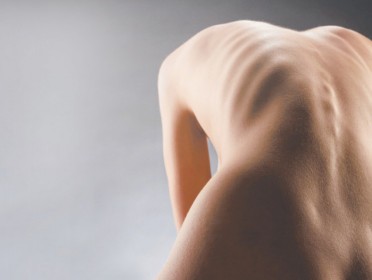
It’s a little-known fact that more Australian women will be affected by an eating disorder than breast cancer in their lifetime: 11 per cent will getbreast cancer while 15 per cent of women are estimated to be faced with an eating disorder (which includes anorexia nervosa, bulimia nervosaand binge eating).
What makes these figures so alarming, according to eating disorder support group The Butterfly Foundation (![]() 1800 33 4673 FREE;http://thebutterflyfoundation.org.au/), is that while Australia has researched and invested in top-class breast cancer detection and treatment programs, there is a lack of funding and resources given to eating disorders. This means lives are often put at risk, treatment can be expensive and sufferers are forced to travel overseas for treatment.
1800 33 4673 FREE;http://thebutterflyfoundation.org.au/), is that while Australia has researched and invested in top-class breast cancer detection and treatment programs, there is a lack of funding and resources given to eating disorders. This means lives are often put at risk, treatment can be expensive and sufferers are forced to travel overseas for treatment.
Butterfly Foundation CEO Christine Morgan says that the number of people going overseas for treatment is increasing and cites a case involving a 28-year-old Sydney woman with anorexia who was unable to get the help she required.
“This woman couldn’t get a bed in the one hospital in NSW that has dedicated spots for adult eating disorder sufferers – the waiting list was months long,” Morgan says. “She had private health insurance, but was deemed too sick to be admitted by the private hospital system. She ended up being admitted at her local public hospital, which had no specialists in treating eating disorders.”
The woman eventually flew to a private residential facility in the US at tremendous cost.
“This is beyond the financial capabilities of most people, but nowhere in Australia is there this type of treatment,” Morgan says.
Find eating disorder help in your state.
Lack of beds
The lack of dedicated public hospital beds for adult sufferers of eating disorders has recently made headlines, with Morgan and other advocates calling for immediate action.
New South Wales has only two dedicated beds, while there are none in the ACT, Northern Territory, Tasmania or Western Australia. Queensland and South Australia each have a handful, while Victoria has the most with 15 beds.
The situation is slightly better for adolescent beds across the country, reflecting the greater incidence of eating disorders in that age group, but still more beds are needed, Morgan says.
Hospital beds are used when sufferers of eating disorders become critically ill – for instance, when someone with anorexia nervosa is at risk of heart or other organ failure. With eating disorders having the highest mortality rate of any mental illness (chronic anorexia has a mortality rate of 15 to 20 per cent), they’re an essential part of treatment, Morgan says.
There are more dedicated hospital beds for both adults and adolescents in the private hospital system, but the cost ranges from $700 to $1000 per day, with most health insurers only covering a portion of the bill. Some private hospitals will also refuse to admit a patient if they are considered too much of a risk, for example if their body mass index(BMI) is below a certain point.
Signs of hope
Steps are being made to bring about a more cohesive approach to treating those battling eating disorders.
One success story is the creation of a facility in Victoria called the Body Image Eating Disorders Treatment & Recovery Service (BETRS). Started in 2010, it’s the first public treatment facility in the state to offer both its own hospital and day patient program, as well as an assessment and referral system for other programs in the state. At this facility, patients have access to a multi-disciplinary team of specialist physicians, nurses, dietitians, occupational therapists and family therapists.
On a national scale, there is the recent creation of the National Eating Disorder Collaboration (NEDC). This government-funded group has created a website with a national database of treatment programs (www.nedc.org.au) and developed national standards of care for eating disorders. In December, the NEDC will present the Federal Department of Health & Ageing with a report on the gaps in treatment across the country.
Morgan, who is closely involved with the NEDC, says its existence shows there’s a growing awareness of eating disorders, but more needs to be done to destigmatise the condition. “We need to help people start a conversation about it, in a similar way to how awareness has been raised about depression.
“The more we do that, the more people are encouraged to seek help, the earlier we can intervene and reduce its impact. Maybe one day we can even prevent it.”
I was terrified of my son’s sandwich
Mum-of-three Leni Cleaves, 37, was diagnosed with anorexia at 23. “My first treatment was as an outpatient in a program that dealt mostly with teens who still lived at home. After two years, I wasn’t better, but I wanted a second child, so I gained weight. After having Hamish, I went back to disordered eating. At 29 I had my wake-up call. Hamish was eating a sandwich and wanted me to eat a piece. I was terrified of it.
“I had a stint as a hospital patient and then attended a program three days a week. I also had therapy with a psychologist who changed my life – he made me realise my identity didn’t have to be as an anorexic. That was the start of my recovery. I attended several rounds of that over the next four years.”
Source: bodyandSoul
 We are sharing information for knowledge. Presented by. SocialDiary.Net
We are sharing information for knowledge. Presented by. SocialDiary.Net



